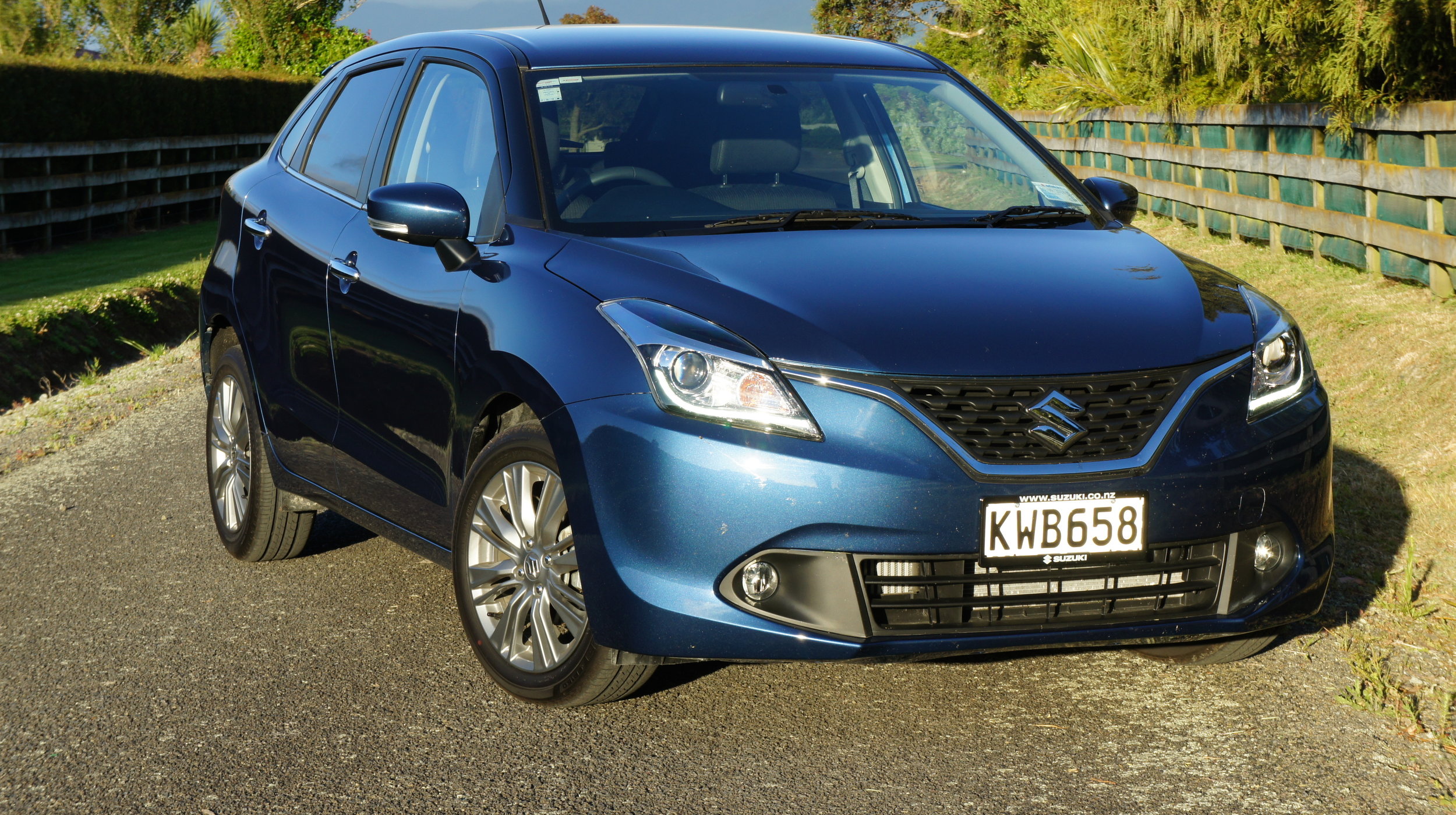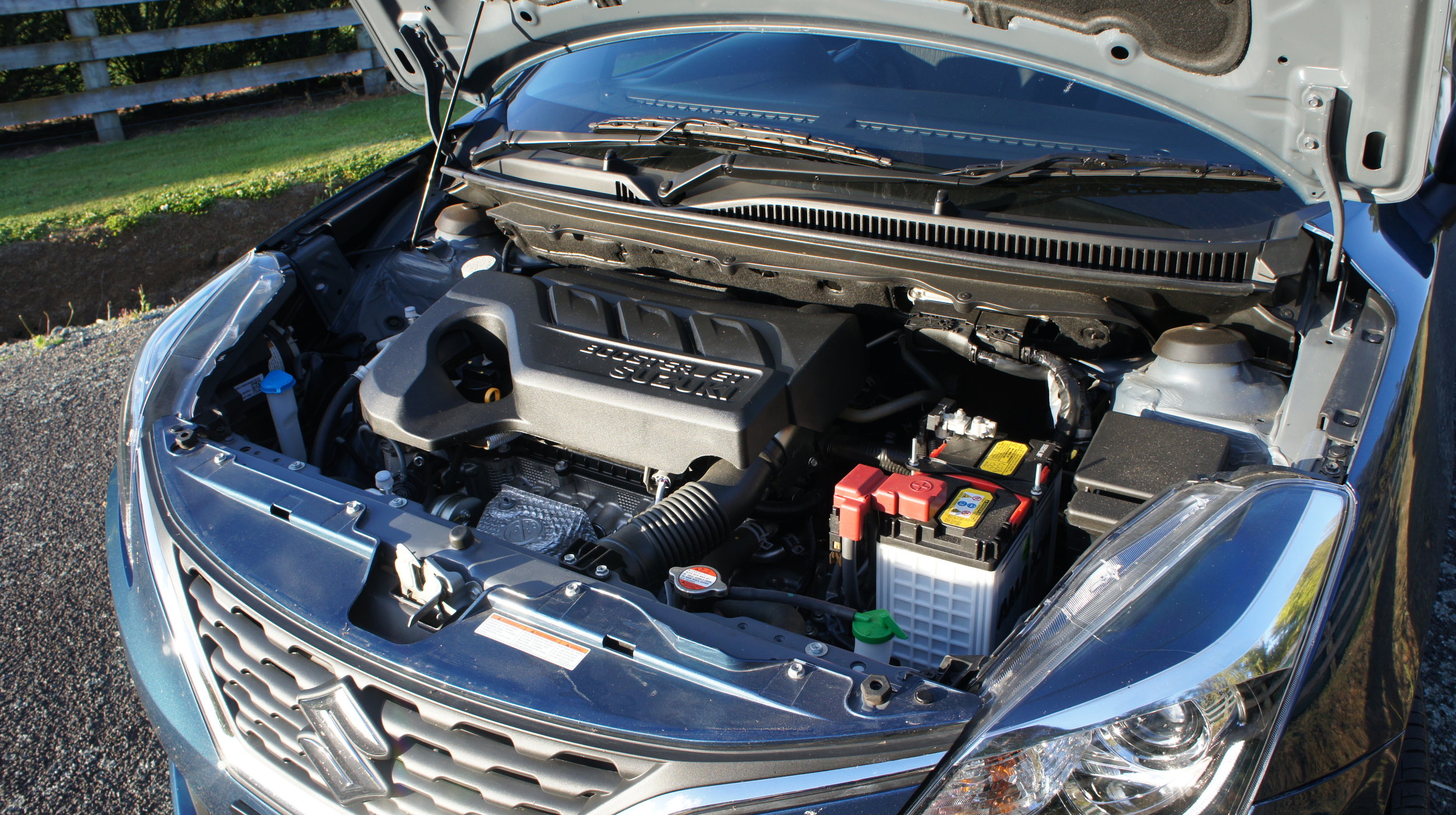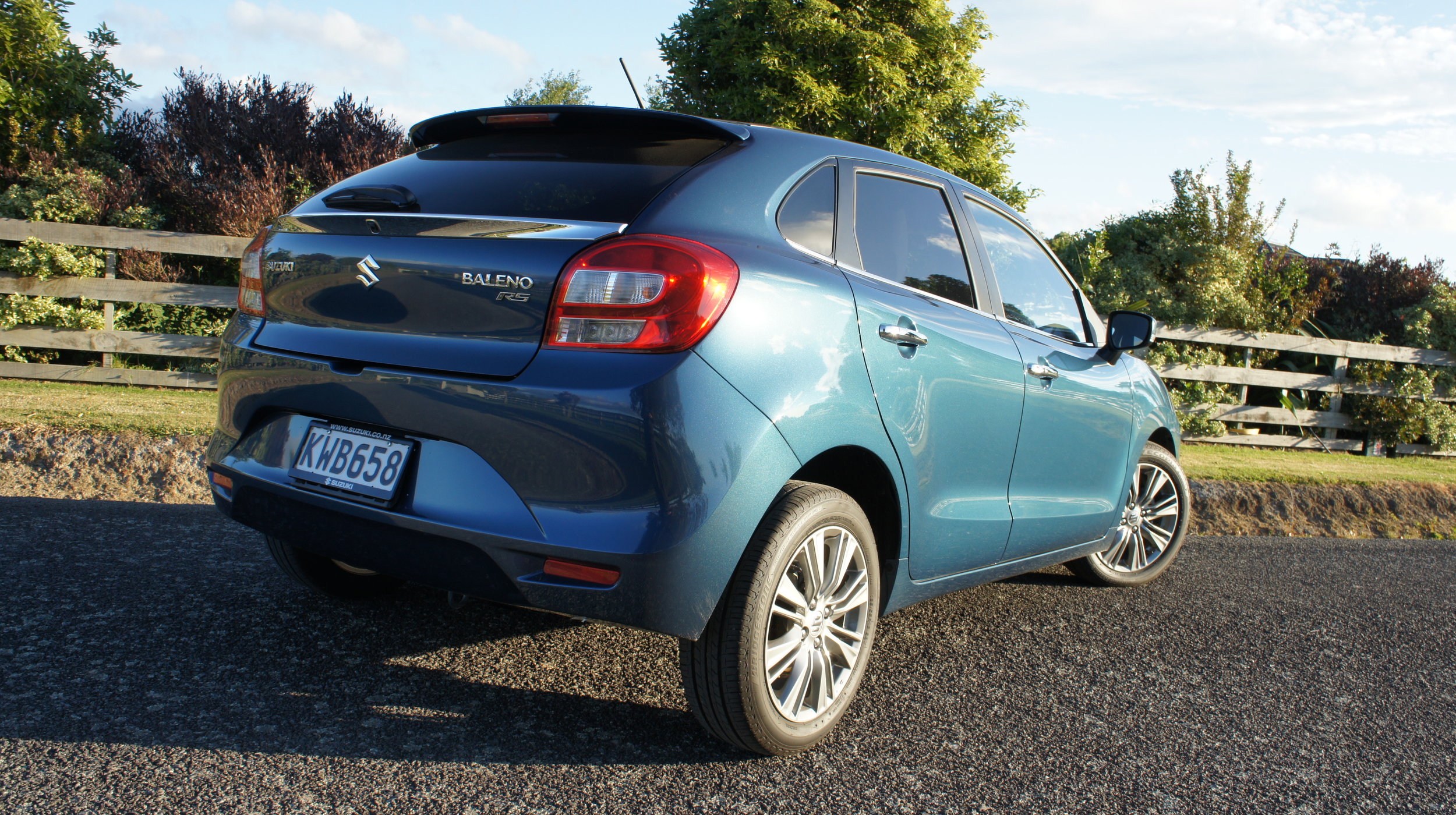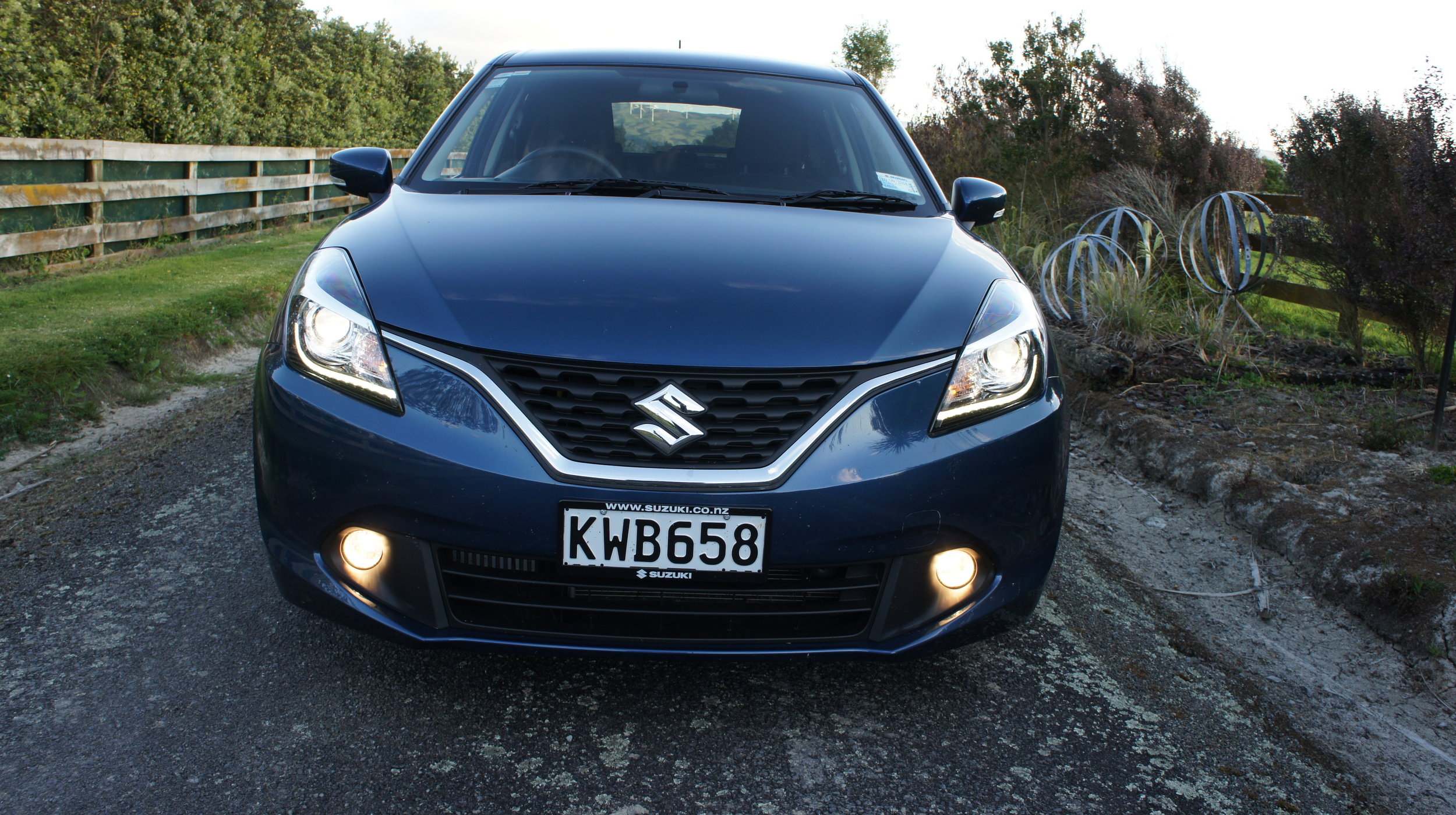Baleno RS: Smaller is better for Swift alternate
/At last, a better version of the small Suzuki hatch you have when their best one won’t do.





EVEN when you’re working with a surefire winning strategy, it never hurts to have a Plan B, right?
In a way, that’s the status the Suzuki Baleno holds, given that it really plays in the exact same sector that the brand’s Swift also occupies.
They’re two kinds of hatch, built off a common platform, surely chasing a common customer. And when that happens? Well, the stats clearly show we favour the Swift. It’s been this small car specialist’s strongest-seller year in, year out whereas the Baleno tends to plod along, basically figuring as the understudy to a superstar which never seems to miss making the show.
Still, it’s not about to cut adrift by Suzuki. Instead, they keep on quietly reconfiguring; as has happened recently. When this current shape Baleno initially appeared, it had a 68kW/130Nm four-cylinder 1.4-litre four-cylinder engine married to a four-stage automatic and cost $24,990. But now there’s another. Costing another $1000, this RS takes a three-cylinder 1.0-litre pumping out 82kW and 160Nm driving through a six-speed auto.
That’s an interesting strategy, given you can get the same drivetrain – and badge – for identical spend on a Swift. So, effectively, they’ve got a pair of RS hatches, one slightly larger than the other, in a dollar-for-dollar showdown.
Don’t imagine this scenario makes it many more likely of choice coming down to a coin toss. As always, I suspect, the Baleno is going to stay overshadowed. As much as it is the better version of this car in its current generation, the Swft – to my mind at least – is the more appealing choice, still.
What potentially gets Baleno off on a back foot is its unflattering design. Suzuki's chief engineer for the development programme is on record as saying the aim was to “develop … an elegant, sophisticated and grown-up character” but, from the look of it, the mission statement also asked for more conservatism than flavours the Ignis and Swift.
It certainly looks less exciting in any streetscape. The common design ethos that affects those other two has not spread to the Baleno; the faces are similar, yes, but the body shaping is quite different, with the latter tending toward a fuller, slightly more rounded figure. What doesn’t help that there’s a degree of proportional awkwardness, particularly around the rear three quarters. So broad is the sheetmetal above them that even the 16-inch alloys – a decent sized rim in this category - appear undersized. The high waistline also serves to make the glasshouse appear out of scale. Aside from that, it just lacks the sheer pizzazz of its showroom sisters.
The sense of it being plain-jane also extends into the interior, but that’s more to do with the trim than the actual content. One big step up for Baleno is that it now adopts not only many of the design elements that have also worked so well in the sister hatches but also a key feature of that new coloured LCD centre-mounted touchscreen. Offering a reversing camera of superb clarity and, if you’re running Apple CarPlay or Android Auto, sat nav, the screen is as attractive and as useful in this car as it is in the others, even if its appearance lends impression of it being a tablet that has been glued into place.
For all this designed-in flair, the ambience is not that engaging. A mix of light grey and charcoal colours dulls the senses, regardless of the smattering metal-effect inserts on the dash, doors and console. It’s as if the job was given to the grand-dads of the crew who did such a great job enlivening the Ignis.
The Baleno does stand apart within the family in that it is the first Suzuki car to be imported into Japan. It comes out of India, primarily for the sub-continent’s massive domestic market, though not wholly – the factory also exports to 100 different countries.
Ford also takes its EcoSport crossover out of India and it would be interesting to compare the two; all I’d say is that the Baleno leaves the same kind of impression that impacted from time in the Ford, in that the fixtures and trims all look hard-wearing and up to resisting a tough life, but also lack a certain degree of flair. Also, while everything seems to come together well, some of the finishing is not quite to admittedly extremely exacting standard that Suzuki obviously expects of its home factories.
In saying that, it’s fair to nonetheless point out that the Japanese car does benefit from having a longer feature list than many rivals at its price point get, with keyless entry and start, cruise control with speed limiter and climate control also featuring.
An 'Advanced Multi-Information Display' in the centre of the main instrument binnacle covers an array of information, from the usual clock, outside temp, and fuel consumption read-outs, to more exotic data including a meter that measures cornering g-force, engine output and torque loadings, as well as accelerator and brake operation. You expect this in a performance car, not a nana machine.
Again, too, it’s a curious provision in a model that takes a relatively sparse approach to basics. There’s just a pair of rudimentary cupholders up front (and none in the back) and while oddments space is reasonable (including a lidded bin between the seats), there’s just a single USB port for the whole car, so prepare to queue or quibble if you all need to charge those devices. And some of the plastic trims are average, being hard, brittle and sharp-edged.
If you’re into small cars that feel bigger than they have a right to on the inside, then Baleno deserves consideration. Even though it’s small overall (just under 4.0m long, 1.75m wide, and 1.5m high, with a 2520mm wheelbase) , it doesn’t come across as being wholly tight inside; front head and shoulder room are quite generous, but the rear works out okay too: I’m 1.8 metres tall, yet sitting behind my own driving position wasn’t too onerous. Three big people across that bench will be a squeeze, of course, but two would survive without feeling squeezed.
Cargo space is decent, with 355 litres available when the 60/40 split folding rear seat is upright. That’s a more than 100 litres’ ahead of the Swift. Fold the rear seat down and 756 litres of space opens up, though some of this comes from it carrying a 80kmh-limited space saver spare tyre, hidden under the floor. That’s to be expected. But the high loading lip is a letdown.
As for the driving? I’m a big fan of small capacity force-fed three-cylinder engines and it’s easy to understand why this BoosterJet is fast becoming the new big thing within Suzuki-dom. Though it isn’t quite as aurally-interesting or as big-hearted as the mill that got me into that fan club, Ford’s EcoBoost, it’s still enchanting enough for its energy and effervescence. And it’s definitely much better than the alternate 1.4.
The outputs aren’t in themselves big numbers, but take into account the engine’s flexibility, its good relationship with this gearbox and, more importantly, the Baleno’s light kerb weight of 975kg and you quickly ‘get’ why it feels like a nippy, if not outright fast, car. Step-off is decent without being outright thrilling; the turbocharger’s real strength is providing a decent dollop of mid-range oomph. It’s also relatively free from turbo lag at lower engine speeds.
It can be quite engaging, to the point where you’ll be tempted to play with the sweet-shifting auto, not that you will because of two reasons.
First, there’s a strong sense that Suzuki would prefer you to enjoy the thrift. Even though the tank is tiny, with just 37 litres’ capacity, the claimed 5.2 litres per 100km allows a theoretical range of around 700km, which would be well far enough in a single trip.
Because? Well, that’s the second bit. Well, even though the platform is shared with the Swift, it’s simply not as sporty. Not even close. Yes, there are all the traits you expect from a tiny, light car - sharp turn-in, nifty change of direction – but it also feels more darty and nervous; the steering feel is very light (to the point of insensitivity) while the ride compliance is pretty ordinary, to be frank. Which, as a colleague pointed out, is a bit of a surprise, given that it’s tuned to appeal foremost in a country with notoriously poor roads.
Which means? Well, for me, Plan A still sounds better to me, just as it will continue to for a lot of people.
At the same token, the $1000 upspend over the 1.4-litre Baleno is easily justified and, with this powertrain, the understudy at least now stands some chance of sharing some of the spotlight with the Swift.















